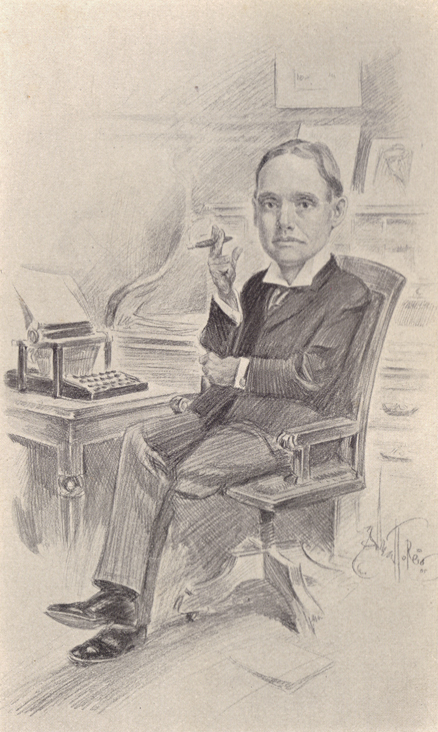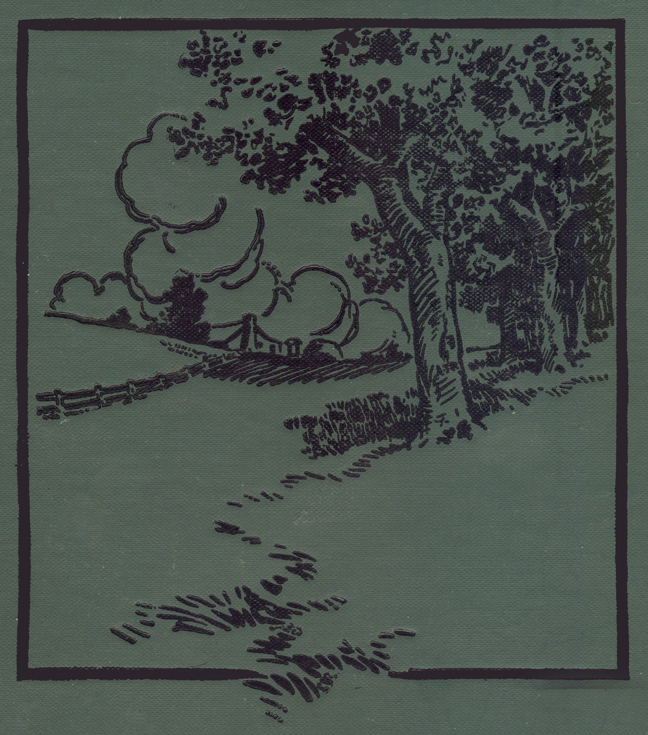
From At the Grass Roots, Comprising “The Christmas of 1883,” and Other Vagrant Sketches, by Elmer House (Dodd Gaston), with Cover Design and Frontispiece by Albert T. Reid, Topeka: Monotyped by Crane & Company, 1905; pp. 20-24.

When I was a boy I went a good deal to dances at Rowden’s Ford. The Ford was the eastern outlet of the community which lived in the big bend of the river, and as it brought the church, the drug store, the circus and the Fourth of July celebration four miles nearer, it had a considerable patronage when the water in the river was low. The Rowden’s Forders were a rather careless lot, much given to coon-hunting by night and horse-trading by day. In the Doane neighborhood it wasn’t considered very good form to go to the Rowden’s Ford functions. There was too much fist-fighting and too much easy familiarity with the Demon Rum to make the locality popular with staid people. Very few of the Doane girls ever went to Rowden’s Ford. But most of the boys drifted into the habit in time
21 The leader of society at Rowden’s Ford was the Moses family. The Moseses usually gave a dance once a week in winter. In summer the intervals between the “rags,” as they were derisively called in the Doane neighborhood, were much longer. It wasn’t much trouble for the Moses family to entertain. All they had to do was to move the kitchen chairs into the “front” room and the table and cupboard out into the back yard. The decorative effect was completed by placing a chair for the fiddler on top of the cook-stove. The Moses family could arrange to give a party in fifteen minutes any time.
The dances at Rowdens’ Ford usually lasted from eight o’clock in the evening until four or five o’clock the next morning. Sometimes we stayed till sunrise if no hard feelings had been engendered and the necessity of stopping the dance to keep down a fight did not arise. Those who participated were charged 25 cents apiece. When one paid his money he 22 received a number, and when dancing began the numbers were called out four at a time in rotation. When one’s number was called he hunted up a partner and took his place on the floor. If a good many numbers were sold one did not get to dance very often, but as he could always step outdoors and stir up a fight in the intervals between dances, nobody suffered from ennui.
Nothing but square dancing was indulged in at Rowden’s Ford. A girl who knew how to waltz was thought to be “stuck up” and the least familiarity with the round dance subjected a man to a good deal of suspicion. One of the features of the parties at the Ford was the jig-dancing of Lee Rowden. Lee always wore a pair of fine boots with very small high heels, into the tops of which he tucked his trousers. He was a very slender, graceful man, and when called upon invariably responded without much urging. He was also in great demand for 23 calling the figures of the quadrilles, and received his number free for “calling” half the dances. As Lee was a married man with a wife and several children, this arrangement was a very good one, financially, for him.
At Rowden’s Ford the three-foot vein of trouble lay very near to the surface of the ground, and one had to be very careful lest he disturb it. We boys from adjoining neighborhoods always figured to get out numbers in the same set so that we would be near each other if the lode were uncovered, and we danced with our coats off, no matter what the mercury was doing outside. I was not very popular at Rowden’s Ford. The real aristocrats of the community — the Moseses, the Rowdens and the Braziers — liked me first-rate, and are still my warm friends. But the others were always suspicious of me because I habitually wore a derby hat, and because some of my enemies had circulated the report that I could schottische.
24 The last party I attended at Rowden’s Ford turned out unpleasantly, and I never went back. That night supper was served to the guests in the bedroom upstairs. The supper was 25 cents extra, but we Doane boys all partook of it. One of the boys who had recently moved into the community from Iowa, and who was unaccustomed to the ways of the Ford, went up to supper a little late and could find nothing to eat but a little cold rice in a teacup. He must have known that it was only an oversight, but he had the bad taste to mention it to the niece of the hostess when he returned to the dancing-floor. I was out of doors when the thing started and got off with one cut and a few bruises, but we had to lead him home.
